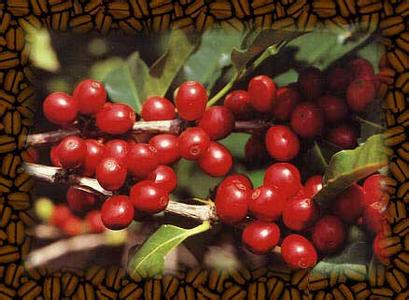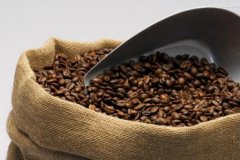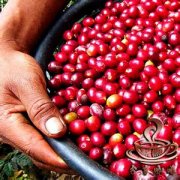A brief introduction to the description characteristics of Fine Coffee Flavor and Flavor Flavor Flavor

These mountain villages are foggy, like spring all year round, with a gentle breeze in summer, cool but not hot, rain but not damp, and no cold damage in winter. Yega Xuefei, a regional flavor of citrus and flowers, can be divided into two categories according to different ways of handling raw coffee beans: category An is washing treatment, and the grade standard is set by the American Fine Coffee Association SCAA, which is divided into Gr-1 and Gr-2. The smaller the Arabic numerals, the higher the grade. G1 Yega Chuefei has a distinctive style, and the flavor of citrus and flowers in the coffee liquid is a delicacy that everyone can't resist. Category B is sun-treated raw coffee beans, and the grade is Gr-1,Gr-3,Gr-4,Gr-5. Similarly, the highest grade of G1 sun Yega Chuefei is fruity. Opening the freshly roasted G1 sun Yega Chuefei coffee bag can subvert people's original understanding of coffee. Only those who have tasted the highest grade of sun Yega Chuefei will believe that coffee is a fruit. The Waka Cooperative is part of the YCFCU Cooperative Union.
Founded in 2005, the Waka Cooperative is made up of 305 farmers, with a planting area of about 763 hectares and an annual output of nearly 460 tons. Because no chemical fertilizers and insecticides are used in coffee cultivation, Waka has obtained the Skal organic coffee certification recognized by the European Union. Small coffee farmers grow coffee in a small area in their own backyard, with an average planting area of 0.5 to 1.5 hectares per household, with coffee as the main cash crop, as well as miscellaneous grain crops such as plantains as shade and food.
Only in grain self-sufficiency in this mode of production, coupled with the local unique native tree species coffee garden, so that each batch of coffee beans are different. Yirga cheffe is a small town in Ethiopia, 1700-2100 meters above sea level, and it is also synonymous with Ethiopian boutique coffee. Since ancient times, this is a wetland, the ancient saying "Yega" yirga, which means "settle down", and "Xuefei" cheffe means "wetland", so Yega Xuefei means "Let's settle down in this wetland"
In December 1994, the Constitution of the Federal Democratic Republic of Ethiopia was formulated. According to the Constitution, Ethiopia will implement a federal system and a parliamentary cabinet system after the general election for a term of five years. After the national election in May 1995, the Federal Democratic Republic of Ethiopia was established on August 22, and Meles became prime minister in her capacity as chairman of the majority party of the people's House of Representatives. On May 14, 2000, Ethiopia held a national election, and EGF defeated other opposition parties by an absolute majority to stay in power. In October, the new federal parliament and government were established, and the speakers of both houses and Prime Minister Meles were re-elected, and the original cabinet also remained in office with the approval of the parliament. In October 2001, May adjusted the government structure, reshuffled the cabinet, established the Ministry of Youth, Sports and Culture and the Ministry of Taxation, and set up a new cabinet composed of 18 ministers. Ethiopia has a total population of 91 million. It is the second most populous country in Africa. The population growth rate is 2.9%. [7]
There are more than 80 ethnic groups in the country, mainly Oromo (40%), Amhara (20%), Tiger (8%), Somalia (6%), Sidamo (4%) and so on. 45% of the residents believe in the Ethiopian Orthodox Church, 40-45% believe in Islam, 5% believe in Protestantism, and the rest believe in primitive religions.
By 2012, the three most populous states were Oromo, Amhara and the southern state of calla lilies. In places where rainfall and temperature adapt, there are perennial herbs, in the dry season
The place is deciduous plants. It can grow to 1 to 2.5 meters high. Underground has a rhizome, heart-shaped ovate leaves basal; early summer fleshy spike inflorescences, there is a funnel-shaped white or milky bud, shaped like a Corolla.
The people's deputies are responsible for the formulation and amendment of the Constitution and federal laws, which are elected by universal suffrage and re-elected every five years. In 2010, there were 547 seats, of which ethnic minorities accounted for at least 20. The current Speaker, Abdullah Gomeida (Abadula Gemeda), took office in October 2010.
The Federal Council has the power to interpret the Constitution, has the power to determine national self-determination and separation, and to resolve disputes between ethnic groups. There are 117 members for a term of five years, elected by state legislatures or directly elected by the people, with at least one representative for each nation and one additional representative for every million people. In 2014, the current Speaker, Casa Tekler Bolhan (Kassa Teklebirhan, female), took office in October 2010.
Judicature
The Federal Supreme Court is the highest federal judicial body. In 2014, the current President, Tegena Getaneh, has jurisdiction over the Federal High Court and the Court of first instance. In 2014, the Attorney General was also appointed by the Minister of Justice, Berhan Hailu.
Yejassefi's coffee trees were planted by European monks (a bit like Belgian monks growing wheat to brew beer) and were later transferred to farmers or cooperatives. Yejia Chuefei is actually constructed by surrounding coffee communities or cooperatives, including Edido Idido, Hafusa Harfusa, Hama Hama and Biloya near Fog Valley Misty valley, all washed with water, but there are also a small number of off-product beans engraved with sun to enhance the charming fruit aroma and mellow thickness.
Important Notice :
前街咖啡 FrontStreet Coffee has moved to new addredd:
FrontStreet Coffee Address: 315,Donghua East Road,GuangZhou
Tel:020 38364473
- Prev

Unique taste of Puerto Rico Coffee Manor San Pedro Manor boutique Coffee Bean planting Market
This is why Puerto Rico and Puerto Rico Yukot select Yauco Selecto, which is the manor bean, the joint brand of Puerto Rico San Pedro, Caracolillo and La Juanita. Island Coffee-in fact, any kind of coffee in Puerto Rico will be given a unique flavor because of its origin, just as different musical styles will always give
- Next

Coffee grindability and roasting degree of Yega Fischer Manor in Ethiopia with rich jasmine scent
There is a strict standard for collecting red fruits (as a result of coffee trees). Before exposure to coffee fruits, unripe green fruits or defective fruits are removed manually, and damaged or moldy fruits are removed during the sun drying process. after two weeks, the flesh sugar and essence seeped into the coffee beans, the water content was reduced to 12%, and then scraped off the hardened pulp, pectin layer and pods with a planer to remove the coffee.
Related
- Does Rose Summer choose Blue, Green or Red? Detailed explanation of Rose Summer Coffee plots and Classification in Panamanian Jade Manor
- What is the difference between the origin, producing area, processing plant, cooperative and manor of coffee beans?
- How fine does the espresso powder fit? how to grind the espresso?
- Sca coffee roasting degree color card coffee roasting degree 8 roasting color values what do you mean?
- The practice of lattes: how to make lattes at home
- Introduction to Indonesian Fine Coffee beans-- Java Coffee producing area of Indonesian Arabica Coffee
- How much will the flavor of light and medium roasted rose summer be expressed? What baking level is rose summer suitable for?
- Introduction to the characteristics of washing, sun-drying or wet-planing coffee commonly used in Mantenin, Indonesia
- Price characteristics of Arabica Coffee Bean Starbucks introduction to Manning Coffee Bean Taste producing area Variety Manor
- What is the authentic Yega flavor? What are the flavor characteristics of the really excellent Yejasuffi coffee beans?

